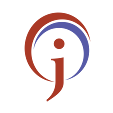- Python frameworks have emerged as the go-to solution for developers to achieve their goals, with fewer lines of code.
Python is known for its tools and frameworks. Moreover, Python frameworks have emerged as the go-to solution for developers to achieve their goals, with fewer lines of code.
Below is a list of the ten best Python frameworks for web development.
(The list is in no particular order)
1| Django
About: Django, an open-source framework, is a popular high-level web framework in Python which supports rapid web development and design.
Some of its features are-
- Django helps developers avoid various common security mistakes.
- With this framework, developers can take web applications from concept to launch within hours.
- The user authentication system of this framework provides a secure way to manage user accounts and passwords.
Know more here.
2| CherryPy
About: CherryPy is a popular object-oriented web framework in Python. The framework allows building web applications in a much simpler way.
Some of its features are-
- A powerful configuration system for developers and deployers alike.
- Built-in profiling, coverage, and testing support.
- Built-in tools for caching, encoding, sessions, authentication, static content etc.
- A reliable, HTTP/1.1-compliant, WSGI thread-pooled webserver.
- A flexible plugin system.
Know more here.
3| TurboGears
About: TurboGears is a Python web application framework. The next version, TurboGears 2, is built on top of several web frameworks, including TurboGears 1, Rails and Django.
Some of its features are:
- It is designed to be a web application framework suitable for solving complex industrial-strength problems.
- It has a transaction manager to help with multi-database deployments.
- It officially supports MongoDB as one of the primary storage backends.
- It provides support for multiple template engines.
Know more here.
4| Flask
About: Flask is a popular Python web framework used for developing complex web applications. The framework offers suggestions but doesn’t enforce any dependencies or project layout.
Some of its features are-
- Flask is flexible.
- The framework aims to keep the core simple but extensible.
- It includes many hooks to customise its behaviour.
Know more here.
5| Web2Py
About: Written in Python, Web2Py is a free, open-source web framework for agile development of secure database-driven web applications. It is a full-stack framework.
Some of its features are-
- It is designed to guide a web developer to follow good software engineering practices, such as using the Model View Controller (MVC) pattern.
- Web2Py automatically addresses various issues that can lead to security vulnerabilities by following well-established practices.
- The framework includes a Database Abstraction Layer (DAL) that writes SQL dynamically.
Know more here.
6| Bottle
About: Bottle is a fast, simple and lightweight WSGI micro web framework for Python web applications. The framework has no other dependencies than the standard Python library.
Some of its features are-
- Bottle runs with Python 2.7 and 3.6+.
- It has a fast and Pythonic *built-in template engine* and support for mako, jinja2 and cheetah templates.
- The framework has convenient access to form data, headers, file uploads, cookies, and other HTTP-related metadata.
- Built-in HTTP development server as well as support for bjoern, Google App Engine, fapws3, cherrypy or any other WSGI capable HTTP server.
Know more here.
7| Falcon
About: Falcon is a WSGI library for building speedy web APIs and app backends. The framework has CPython 3.5+ and PyPy 3.5+ support. Falcon complements more general Python web frameworks by providing extra reliability, flexibility, and performance.
Some of its features are-
- It includes a highly optimised and extensible codebase.
- Easy access to headers as well as bodies through the request and response objects.
- The framework provides DRY request processing via middleware components and hooks.
Know more here.
8| CubicWeb
About: Written in Python, CubicWeb is a free and open-source semantic web application framework. It empowers developers to efficiently build web applications by reusing components (called cubes) and following the well known object-oriented design principles.
Some of its applications are-
- It has a query language named RQL, similar to W3C’s SPARQL.
- It includes a library of reusable components that fulfil common needs.
Know more here.
9| Quixote
About: Quixote is a framework for writing Web-based applications using Python. The goal of this framework is to provide flexibility and high-performance during web development.
Some of its features are-
- Flexibility and high-performance.
- Quixote includes Python Template Language for producing HTML with Python code.
Know more here.
10| Pyramid
About: Pyramid is a lightweight and open-source Python web framework. The framework provides only the core tools needed for nearly all web applications: mapping URLs to code, security, and serving static assets (files like JavaScript and CSS).
Some of its features are-
- Support for Python 3.8 and 3.9.
- New security APIs to support a massive overhaul of the authentication and authorisation system.
Know more here.


















0 Comments
If you have any doubts,please let me know